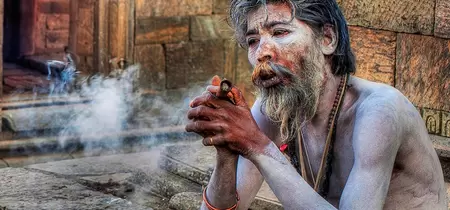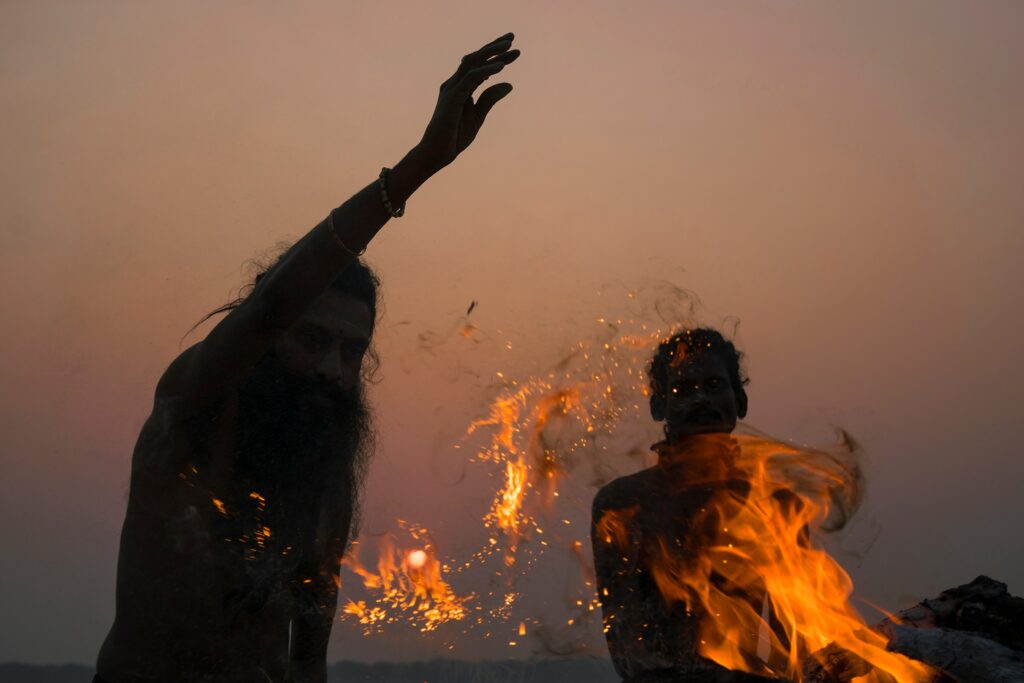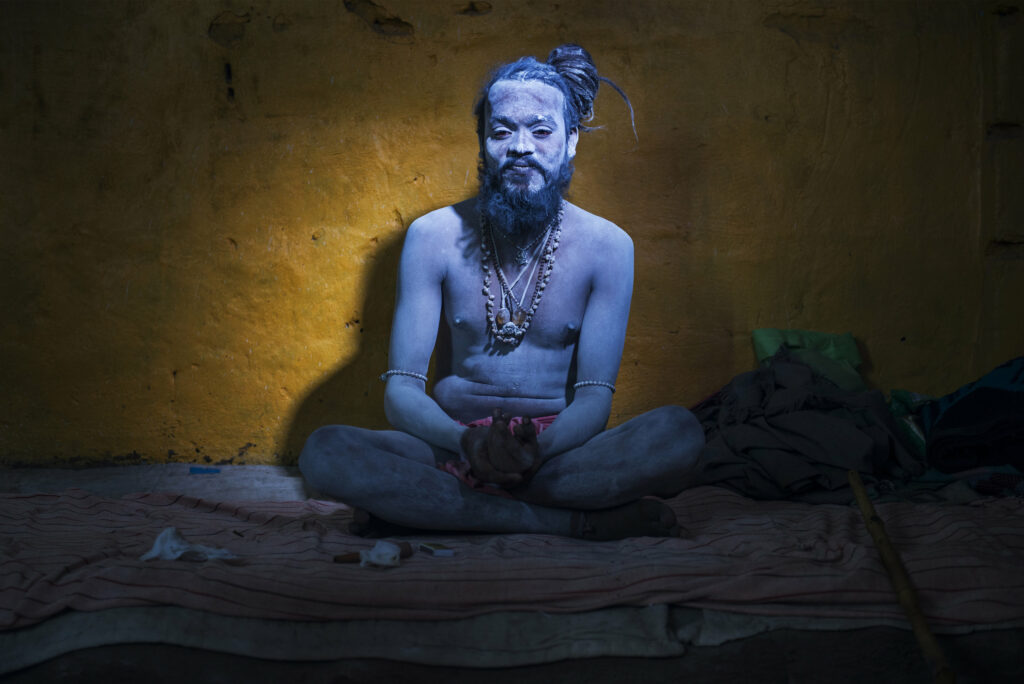Aghori – Unraveling The Mysteries Of An Ancient Tradition!
In the rich landscape of Indian spirituality, the Aghori tradition emerges as a fascinating mystery, inviting curious minds to venture into its profound practices and beliefs.
Aghori is a unique spiritual tradition in India known for its unusual practices. Based in Varanasi, Aghoris challenge normal ways of living, worship different gods, and see life and death in a special way. They do intense rituals to understand life better and, surprisingly, help society through good deeds.
Come along on a journey of transformation as we unravel the core of Aghori, demystifying its rituals, uncovering its origins, and embracing the positive essence embedded in this ancient tradition.
What Is The Aghori Tradition? – Read The Below Two Steps!
The Aghori tradition, an offshoot of the Kāpālika sect within Shaivism, is a monastic order of ascetic Shaivite sadhus primarily based in the sacred city of Varanasi, Uttar Pradesh, India. The term “Aghori” translates to ‘not-fearful’ or ‘fearless,’ encapsulating the essence of their fearless approach to spirituality. Let’s journey into the core of Aghori beliefs and practices.
Aghori Roots:
The roots of Aghori can be traced back to Baba Keenaram, an ascetic who lived in the 18th century. The foundational deity of the Aghori tradition is Lord Dattatreya, who is revered as the adi guru (ancient spiritual teacher). The initiation of Aghori practices involved Lord Dattatreya offering his own flesh to Baba Keenaram, symbolizing a profound guru-disciple connection.
Read: Crediblebh – Let’s Explore In 2024!
Unveiling Aghori Practices:
Aghoris are renowned for their unique rituals, which often involve macabre elements. Living amidst cremation grounds, they engage in post-mortem rituals, utilizing human remains for spiritual practices. This unconventional approach is aimed at challenging societal norms and transcending conventional perceptions of life and death.
Where Are Aghoris based? – Never Miss This Out!

Aghoris find their spiritual haven in Varanasi, North India. The ancient city, with its powerful spiritual energy, proximity to the Ganges River, and a multitude of cremation grounds, aligns perfectly with the Aghori way of life. Varanasi becomes not just a geographical location but a living embodiment of the cyclical nature of existence.
While Varanasi remains the epicentre, Aghoris can also be found in other parts of India, and a few have ventured beyond national borders, spreading the teachings and practices of this unique tradition.
Who Is Considered The Founder Of The Aghori Tradition?
Baba Keenaram, a revered ascetic of the 18th century, is acknowledged as the founder of the Aghori tradition. The lineage traces its spiritual ancestry to Lord Dattatreya, a deity associated with the cremation ground, embodying the principles of non-duality and fearlessness.
In addition to Lord Dattatreya, Aghoris worship Shiva in various fierce forms such as Bhairava. The male deities invoked by Aghoris include Mahākāla, Bhairava, Virabhadra, and others, each representing different aspects of cosmic energy.
Does Aghoris Practice Rituals? If Yes, What Kind?
Aghoris are synonymous with their distinctive and often sensational rituals. These rituals serve as a means to transcend the limitations of the material world, fostering an altered state of consciousness. Let’s delve into the intriguing world of Aghori practices.
Living in close proximity to cremation grounds is a deliberate choice for Aghoris. The significance lies in confronting and overcoming the fear of mortality, as death is considered an integral and transformative part of life’s cyclical nature.
Aghoris smear cremation ashes on their bodies, adorn themselves with human skulls, and engage in post-mortem cannibalism. While these practices may seem shocking to outsiders, they hold deep symbolic meanings within the Aghori philosophical framework.
How Do Aghoris View Life And Death? – Discover More!

Aghoris navigated the realms of life and death with a lens of non-duality, perceiving them as interconnected facets of cosmic dance. The way they approach mortality reflects a profound understanding of the impermanence of the physical body and the eternity of the soul.
Aghoris embrace the impermanence of life, encouraging a profound appreciation for the present moment. By meditating on cremation grounds, they seek to dissolve the fear of death and attain a state of heightened awareness.
Viewing life and death as illusory, Aghoris strive to break free from societal conditioning and dualistic thinking. This approach aligns with the broader Shaivite philosophy, emphasizing the oneness of all existence.
What Is The Significance Of Cremation Grounds For Aghoris?
Cremation grounds hold immense spiritual significance for Aghoris, serving as transformative arenas for their sadhana. The symbolism embedded in these grounds goes beyond the physical, embodying the core principles of the Aghori tradition.
Living in proximity to cremation grounds is not merely a practical choice but a symbolic one. Aghoris actively confront the fear of death, utilizing the intense energy of these spaces to propel their spiritual journey.
Cremation grounds, known as smashan, are considered places where the material is transformed into the spiritual. Aghoris engage in rituals that involve sitting on corpses, meditating, and performing practices to break free from societal conditioning.
What Do Aghoris Believe About Purity And Pollution?
Aghoris stand in stark contrast to orthodox Hinduism, challenging established norms related to purity and pollution. Their beliefs and practices aim to dismantle societal constructs, paving the way for a deeper understanding of the interconnectedness of all things.
Aghoris intentionally embrace pollution, considering it a catalyst for spiritual transformation. By engaging with what society deems impure, they transcend dualistic thinking and strive for a state of purity beyond conventional definitions.
Aghoris use societal taboos as tools for self-realization. By going beyond accepted norms, they seek to break free from the constraints of conditioned thinking and experience the unbounded nature of consciousness.
Read: https://tecnoaldia.net/que-es-payonner-y-como-usar-sus-servicios/ – Get Started with Payoneer!
Who Do Aghoris Worship Or Follow? – Explore More!

Aghoris are devout followers of Lord Dattatreya, who represents the foundational energy of their tradition. Additionally, their worship extends to other deities, each embodying different aspects of the cosmic energy.
Considered the adi guru, Lord Dattatreya holds a central position in Aghori worship. The offering of his own flesh to Baba Keenaram signifies the transmission of spiritual wisdom and the establishment of a profound guru-disciple connection.
Aghoris invoke the energies of fierce deities like Bhairava, Mahākāla, and Virabhadra. These deities symbolize the untamed forces of the cosmos and serve as channels for Aghoris to connect with the primal aspects of existence.
How Do Aghoris Approach Healing And Health? – Unlock Insights!
Aghoris incorporate healing practices as an integral part of their spiritual path, viewing physical well-being as intertwined with spiritual purity. While some of their approaches may seem unconventional, the underlying principle is to purify the body and mind.
Healing in the Aghori tradition often involves purification rituals. Patients seeking assistance believe that Aghoris can transfer health and remove pollution, leading to holistic well-being.
In contemporary times, there is a shift in the approach to healing among Aghoris. While traditional practices persist, there is a growing emphasis on balancing personal sadhana with selfless service to the community.
Are There Any Specific Places Important To Aghoris For Spiritual Practices?
Sacred Pilgrimages:
Aghoris undertake spiritual practices in specific locations that hold deep significance within their tradition. These places serve as conduits for heightened spiritual experiences and transformative encounters.
Kina Ram’s Hermitage:
A prominent pilgrimage centre for Aghoris is Kina Ram’s hermitage in Ravindrapuri, Varanasi. Here, practitioners engage in rigorous sadhana, deepening their connection with the divine and pushing the boundaries of consciousness.
Cremation Grounds near Shakti Pithas:
Cremation grounds near Shakti Pithas, revered centres for the worship of the Hindu Mother Goddess, are preferred locations for Aghori practices. These sites are chosen for their spiritual potency and alignment with the elemental forces of creation and destruction.
How Has Aghor Yoga Changed Over Time?

Aghor Yoga, once characterized by seclusion and extreme practices, has undergone transformative changes over time. The teachings and practices associated with Aghor Yoga have evolved to encompass a more balanced and socially engaged approach.
Baba Bhagwan Ramji played a pivotal role in reforming Aghor Yoga. His vision expanded beyond individual sadhana to include social service initiatives aimed at uplifting the community and addressing societal issues.
Modern Aghor Yoga places greater emphasis on balancing personal sadhana with seva (selfless service). This shift reflects a broader understanding that spiritual growth is not isolated from societal well-being but intricately connected to it.
Are There Any Social Service Initiatives Associated With Aghoris?
Contrary to popular stereotypes, Aghoris have initiated social service projects aimed at addressing societal challenges and contributing to the welfare of the community. These initiatives reflect a commitment to compassionate action.
Baba Bhagwan Ramji established the Sri Sarveshwari Samooh Ashram, an institution dedicated to social service. The ashram focuses on eliminating the dowry system, providing free leprosy treatment, and offering free schooling for underprivileged children.
Aghoris, through their social service endeavours, demonstrate a compassionate and inclusive approach to spirituality. Their actions dispel misconceptions and showcase the transformative power of Aghor Yoga in fostering positive change.
What Is The Connection Between Aghoris And Other Hindu Sects?
While Aghoris maintain a distinct identity, there are connections and differentiations with other Hindu sects. Understanding these dynamics provides insights into the diverse landscape of Hindu spirituality.
Aghoris differ from Shivnetras, another Shaivite sect, in their engagement with extreme ritual practices. Shivnetras share broader Shaiva principles but do not embrace the intense rituals synonymous with Aghoris.
Aghoris align with broader Shaiva beliefs, emphasizing the perfection of Shiva and the pursuit of moksha. The interconnectedness of Aghoris with Shaivism places them within the broader spectrum of Hindu spiritual traditions.
FAQs:
Are Aghoris related to mainstream Hinduism?
While Aghoris challenge orthodox Hindu norms, they share foundational principles with broader Shaivite beliefs, emphasizing the pursuit of moksha and the perfection of Shiva.
Do Aghoris eat human flesh?
Aghoris claim to consume flesh only from those who willingly offer their bodies upon death. However, historical accounts and anecdotal evidence suggest variations in adherence to this claim.
How has Aghor Yoga entered mainstream society?
Aghor Yoga has evolved from seclusion to a more socially engaged approach. Modern practitioners focus on balancing personal sadhana with selfless service, contributing positively to mainstream society.
Wrapping Up The Aghori:
In the culmination of our exploration into the Aghori tradition,
Aghori stands out as a distinctive spiritual tradition in India, recognized for its unconventional rituals. Centered in Varanasi, Aghoris defy conventional lifestyles, venerate diverse deities, and perceive life and death from a unique perspective.
As we part ways with this exploration, may it inspire a deeper understanding of the diverse tapestry of spiritual traditions that enrich the cultural landscape of our world.
Read Also:
